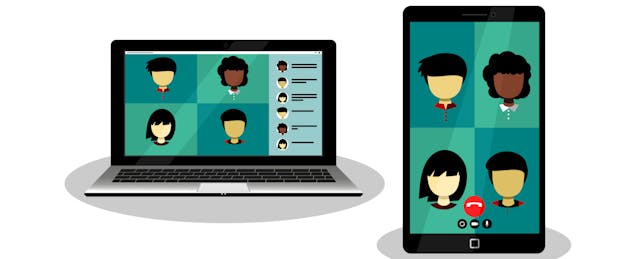As colleges plan to welcome students back for the fall semester—while preparing for a possible second outbreak of the coronavirus that would force classes back online–one thing is for sure: Community is more important than ever.
Families debating the value of virtual college classes fear that schools in the fall will lack the real “college experience,” and that students will struggle with online learning and feel more isolated than engaged. And so many students will fail to get the most out of their education—and dollars—if colleges don’t innovate what they are doing to make students feel welcome.
Colleges don’t need new platforms or technology to build community or welcome students. They need to invest in infrastructure that builds relationships. Learning communities—where students work together with a common goal, purpose, or interest—are colleges’ best tool to make online learning hands-on learning.
In-person versions of learning communities have long been celebrated by colleges because of their ability to build relationships by getting students invested in their college experience. Learning communities work because students who share a love for topics like entrepreneurship, technology, medicine or public service get to routinely meet and share ideas with one another. Being in a learning community means feeling welcomed by your college community, with the confidants that make learning purposeful in a university of thousands or tens of thousands of students feel intimate. This great work cannot stop because learning has gone remote, or remote students will continue to struggle to find value in their education.
I helped manage the Public Service-Learning Community (PSLC) at Binghamton University before and during the coronavirus spread. Students in the PLSC spend a full year together building relationships with community-service organizations in the local community, and with each other. Before the virus, students cooked meals for formerly homeless men living in the Binghamton Rescue Mission. They also volunteered for the new North of Main community organization to help the group grow their programs for city residents.
Being in the learning community helped these students stay connected to each other even after the virus sent them home—letting them find ways to continue their great work helping others. When PSLC students were abruptly sent home, their recorded service hours dropped at first, in addition to meetings not taking place, so engagement suffered. Then PSLC students took their community virtual, coming up with new events like playing board games through Zoom to keep in touch with one another. They also re-imagined their service by making masks for essential workers and by calling residents suffering from depression—which made their group more worthwhile for themselves and the locals.
College administrators can make the transition to online learning communities in the same way, getting students passionate about a topic, then using their ideas to drive what the learning community can do virtually.
For colleges, social infrastructure has become as important as digital infrastructure after COVID-19 in getting students to continue to enroll in classes. For instance, colleges can build an online platform that lets students plan their activities and measure progress, as well as identify faculty willing to help. When professors and others take time to share their personal passion for common learning community topics like public service or healthy mindfulness, that inspires students to follow their lead. Students who find purpose in their remote learning with these online learning communities will be more likely to find success—and stay enrolled.
Many colleges already run learning communities in person, but most administrators never imagined a virtual component. Getting students into hybrid or virtual learning communities, will give them a more personalized college experience.
The colleges that invest in building communities before schools return again in the fall will have students get the connection they need, while those that do not will see their usefulness drop.


